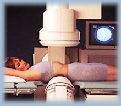









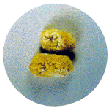
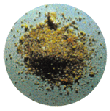
Complications are very rare although mild pain and blood in urine is observed for 1-2 days after treatment.
This procedure involves a short general anaesthesia. During this time, a fine tube called an ureteroscope is placed into the urine passage tube, to the bladder and ureter. The impacted ureter stone is identified and broken down by laser. Fragmentation with laser is very precise as is associated with minimal damage to the surrounding tissue. The fragments are later removed via the ureteroscope.
The entire procedure should not take more than 30 minutes and done as day surgery. Mild discomfort and blood in urine is observed for 1-2 days after the procedure. Return to work is expected after 1-2 days.
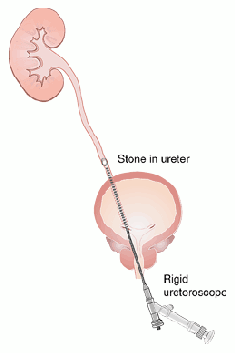
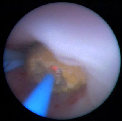

A very large kidney staghorn stone can be removed via a small, 1 cm cut on the skin overlying the kidney. A scope is placed via this hole, which leads the urologist into the kidney containing the stone. The kidney stone is fragmented by a laser or mechanical device to small fragments that can be removed via the 1 cm skin incision. There is minimal disruption to the kidney. Recovery from surgery is rapid as the surgical incision is small and causes minimal pain.
This procedure is done under general anaesthesia and usually requires a hospital stay of 2-3 days. Return to work is expected within 7-10 days.
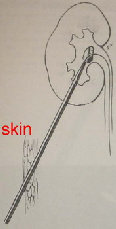
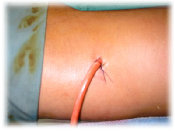








Not all stones require treatment. Smaller stones that are not causing complications can be passed out during natural passage of urine.
Certain stones such as ‘pure’ uric acid stone can be dissolved with medications.
A urinary or kidney stone that requires removal in
these situations:
1. A stone that is causing persistent pain
2. A stone that is causing a complication such as obstruction to the kidney,
which may lead to kidney damage, infection and bleeding
3. A stone that is not likely to come out by its own and has potential to grow in size and cause complications
Laparoscopy or keyhole surgery is being performed for kidney or ureter stone that are not amenable to treatment by ESWL, endoscopy
and laser or PCNL surgery. It is suitable in patients who are taking or receiving anti-coagulation (blood thinning agents) therapy.
Laparoscopy
procedures include laparoscopic ureterolithotomy (for ureter stones) and laparoscopic pyelolithotomy (for kidney stones) that can
be done together with pyeloplasty.
These procedures are done under general anesthesia and would require a hospital stay of 2-3 days.
3 or 4 small 5mm - 10mm incisions are made on the abdomen to expose and removed the stones. An internal fine plastic tube called a
stent is usually placed in the urine tract after the surgery and would be removed after 1-2 weeks.
Our urology centre offers comprehensive treatment for urinary or kidney stone, dependant on the size and position of the stone

This is the treatment of choice for the majority of urinary and kidney stone. It does not involve any surgery or instruments placed
into the body. A patient lies on a bed and the treatment device is placed over skin overlying the stone.
Shockwaves are generated
and passed from the machine into the patient's body and eventually to the stone. The energy of the shockwave is absorbed by only the
kidney stone and results in fragmentation. A large stone can be broken down to very fine sand fragments. The fragments are removed
during passage of urine.
Although the amount of energy is strong enough to fragment a hard kidney stone, it would not cause damage
to the surrounding kidney tissue as the shockwaves are well directed and monitored throughout the procedure by the urologist.